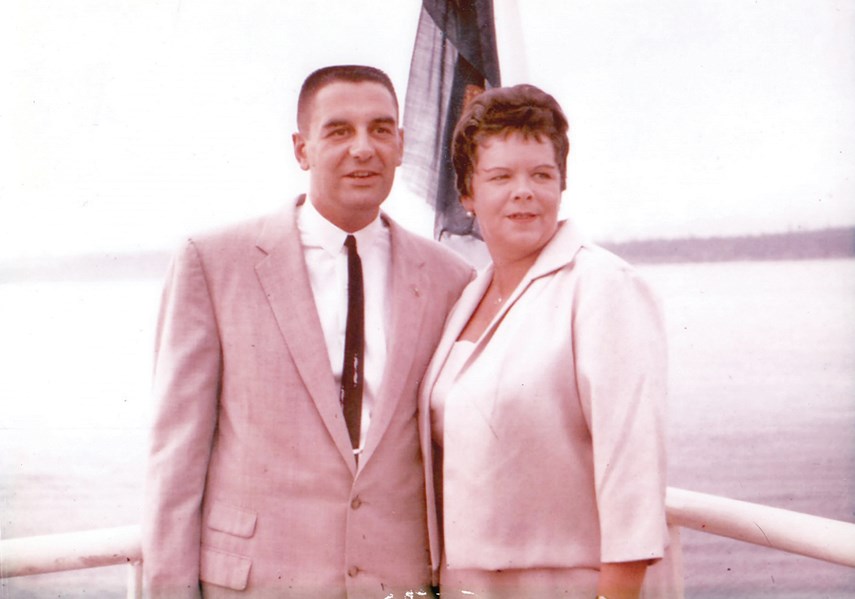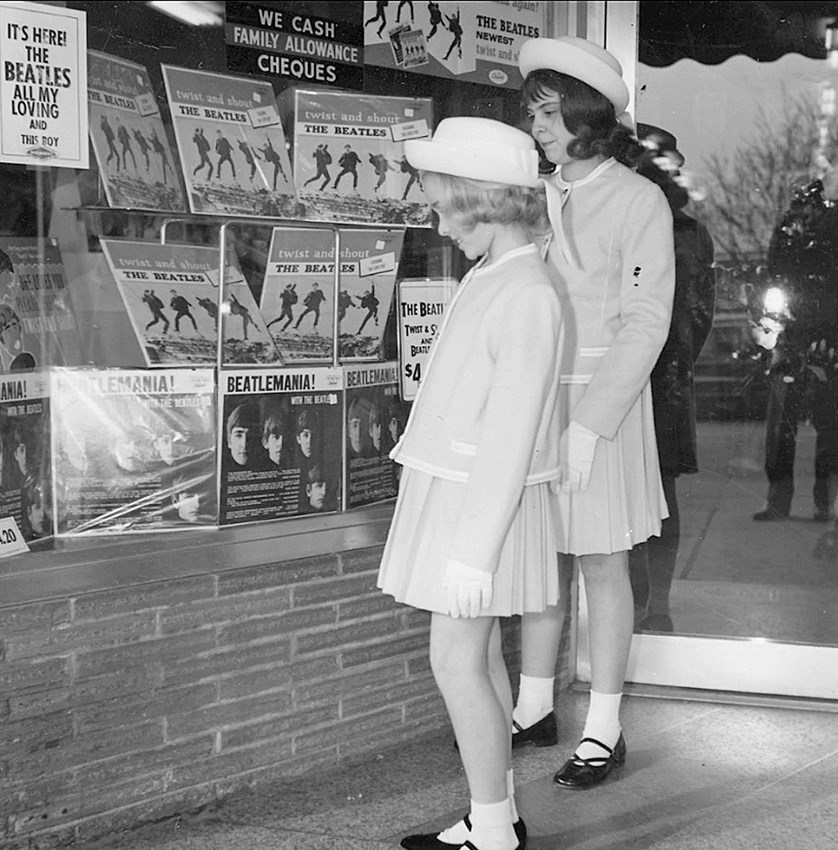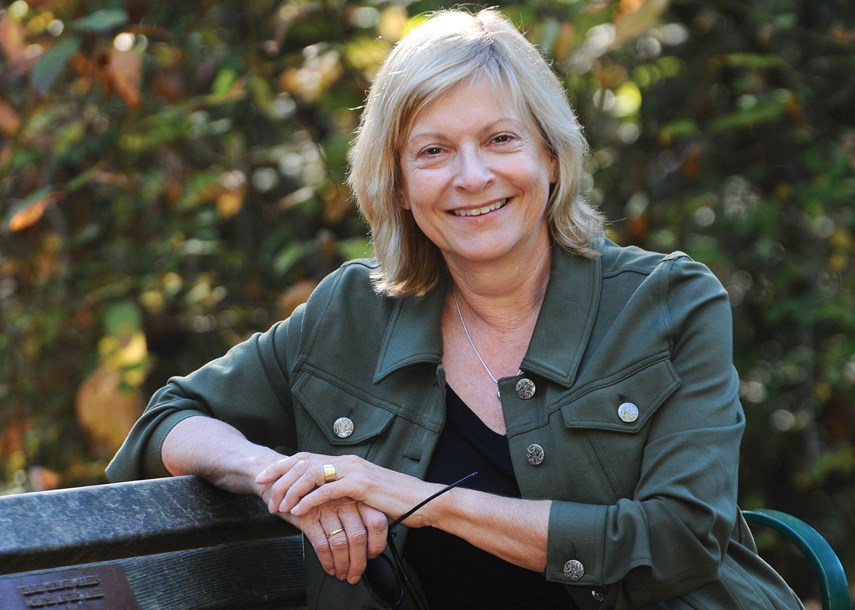Eve Lazarus: Murder by Milkshake, Tuesday, Nov. 6, 7 p.m. Pat’s Pub, 403 East Hastings St. 19+. Free event. Lazarus will read from her work and chat with special guest Jeannine Castellani.
“Nowadays you have to be a scientist if you want to be a killer.” – Vladimir Nabokov, Lolita
All through the spring and summer of 1965, Rene Castellani thought he was getting away with murder.
And he almost did, according to crime historian Eve Lazarus, in her latest work of non-fiction, Murder by Milkshake: An Astonishing True Story of Adultery, Arsenic, and a Charismatic Killer.
Castellani, a radio promotions man at CKNW, was having an affair with one of the radio station’s receptionists, Lolly Miller, and at some point started putting arsenic in his wife Esther’s food to make his life more convenient.
She died a slow, painful, agonizing death. Her doctors had worked for months while she was alive trying to discover the cause of her distress but it took an autopsy, dumb luck and some brilliant police work to find the answer.
Over the years the notorious murder case has taken on the mythical baggage of an urban legend with much of the story anchored around the fact that the killer was supposedly up on top of the BowMac sign on West Broadway while his wife was dying. How could he possibly have done the deed with an airtight alibi like that?
Murder by Milkshake sets the record straight and separates fact from fiction through new research including interviews with family members and former colleagues of Castellani.
The book opens with a three-page cast of characters, rolling out like movie credits so that readers can keep track of all the people involved. The horrific tale could be straight out of Dostoyevsky or Hitchcock but it actually played out on the streets of Vancouver not that long ago.

Lazarus has written previously on the case but had not thought about doing a full book treatment herself until she happened to meet the daughter of Rene and Esther Castellani, Jeannine, at the book launch of her last work, Blood, Sweat, and Fear, in 2017, at the Vancouver Police Museum.
The museum, housed in a Gastown heritage building on Cordova, used to be the city morgue. Its interactive crime scene exhibits are set up in rooms that once contained the morgue and an autopsy suite where post-mortems were performed.
“The autopsy suite is where Esther had been brought after she was exhumed,” says Lazarus. “I’d always wondered what happened to Jeannine, who was an 11-year-old at the time of this horrific murder of her mother by her father.
“Jeannine brought along one of her two daughters, who are now in their 30s. We arranged to meet the following week and everything just clicked. I would not have written the book without her and hearing the story from her point of view.”
When Rene Castellani was sent to jail for capital murder and initially sentenced to death he still had custody of Jeannine. Immediately after the murder trial and for several years into her teens Jeannine lived with Lolly, her father’s girlfriend, completely cut off from her mother’s family. She was never implicated in the murder and was never abusive to Jeannine but when Lolly started seeing another man the teen went to live with her father’s sister Rose in North Vancouver and began attending Delbrook Senior Secondary.
“Jeannine managed to survive all this,” says Lazarus. “She’s just this really nice, brave woman, probably very much like Esther was.”
In Murder by Milkshake, Lazarus goes deep into the backstories of Rene and Esther Castellani to trace their life trajectories. Both were born in 1925 and grew up in Vancouver during the Depression. Rene’s family owned a delicatessen in one of the blocks where Robson Square is now situated. Esther’s family opened a bakery on Davie Street. She was sexually abused by her stepfather and like her brother and sister left school at 15 to help out in the bakery. She was still working there when she married Rene in 1946 and the young couple moved in with her parents above the bakery.
By all accounts Rene Castellani was well-respected but there were also always lots of questions surrounding him. The family moved around a lot and a suspicious fire became even more suspicious as time wore on.

Murder by Milkshake reflects a period in transition. Post Second World War but pre-rock’n’roll domination of popular culture there was a discombobulated rootlessness in the air. The Beatles came to town to play Empire Stadium and CKNW sent a crack team of reporters including Jack Cullen and Jack Webster to cover the event which featured acts like 19-year-old Jackie DeShannon along with the British “mop tops.” No one on the stage was over 25. No one on the radio crew was under 40 and the die-hard Sinatra fans reported back as if they’d witnessed the Hindenburg disaster all over again. The kids were alright but that didn’t mean they were going to take over. As part of the radio team, Rene Castellani was there and managed to get Paul McCartney’s autograph for his preteen daughter.
The Beatles played Empire Stadium on Aug. 22, 1964. Esther Castellani would die less than a year later on July 11, 1965 of arsenic poisoning.
“Rene nearly did get away with it,” says Lazarus. “He made a couple of crucial mistakes. He could have got her cremated and it all would have gone away. He would have walked free on that one completely because then Dr. Moscovich could never have proved it. It was only because the doctor was so determined to get the answer that he got caught. Today, of course, everything would be different with the science and investigation but it would still be circumstantial evidence and it would still be 50/50 whether he would be convicted. From reading through all the court documents he was really convicted because of his affair not because of any direct evidence that they had on him.”
The day after Esther died Rene left for Disneyland with Lolly, her son Don and Jeannine in the car ready to start their new life together. But things would unravel quickly. Due to ongoing suspicions from her doctor Esther’s newly buried body was dug up and examined. A homicide investigation to determine how she died began on Aug. 3, 1965. Rene gave the police permission to search the family home where two detectives found a can of Ortho Triox weed killer sitting under the kitchen sink.
Not only was arsenic poisoning rare in 1965 it was also hard to detect. A nuclear reactor in Ontario was used to test for arsenic in her hair and nails. That way they could make an estimate of when and how much she was given.
“It’s such a brilliant way to kill someone,” says Lazarus. “It mimics natural causes and viruses and things like that. It wasn’t until they looked around and discovered he was having an affair and had this motive to get rid of her. I talked to a scientist and even now they can’t be that specific of when Esther was given the arsenic. They knew that she got a huge dose within 35 days of her death but they didn’t know when. The prosecution also argued that Rene snuck down from the BowMac sign – they were trying to cover both bases. Her health did start to recover while he was up there and then the day after he came down she just took this huge turn for the worse and died a few weeks later. It makes sense that that’s what happened.”
There is much more to the story and Lazarus follows Castellani’s life into prison and back out again as he attempted to remake his life in the decades afterwards.
“I probably interviewed over a dozen people from his cellmate to Jeannine, to people who worked with him in the community, to his boss that hired him in Abbotsford and people that worked with him. They all thought he was such a great guy. He told everyone he was innocent. But if you asked whether they thought he was guilty? They’d go, ‘Oh yea, he did it.’



